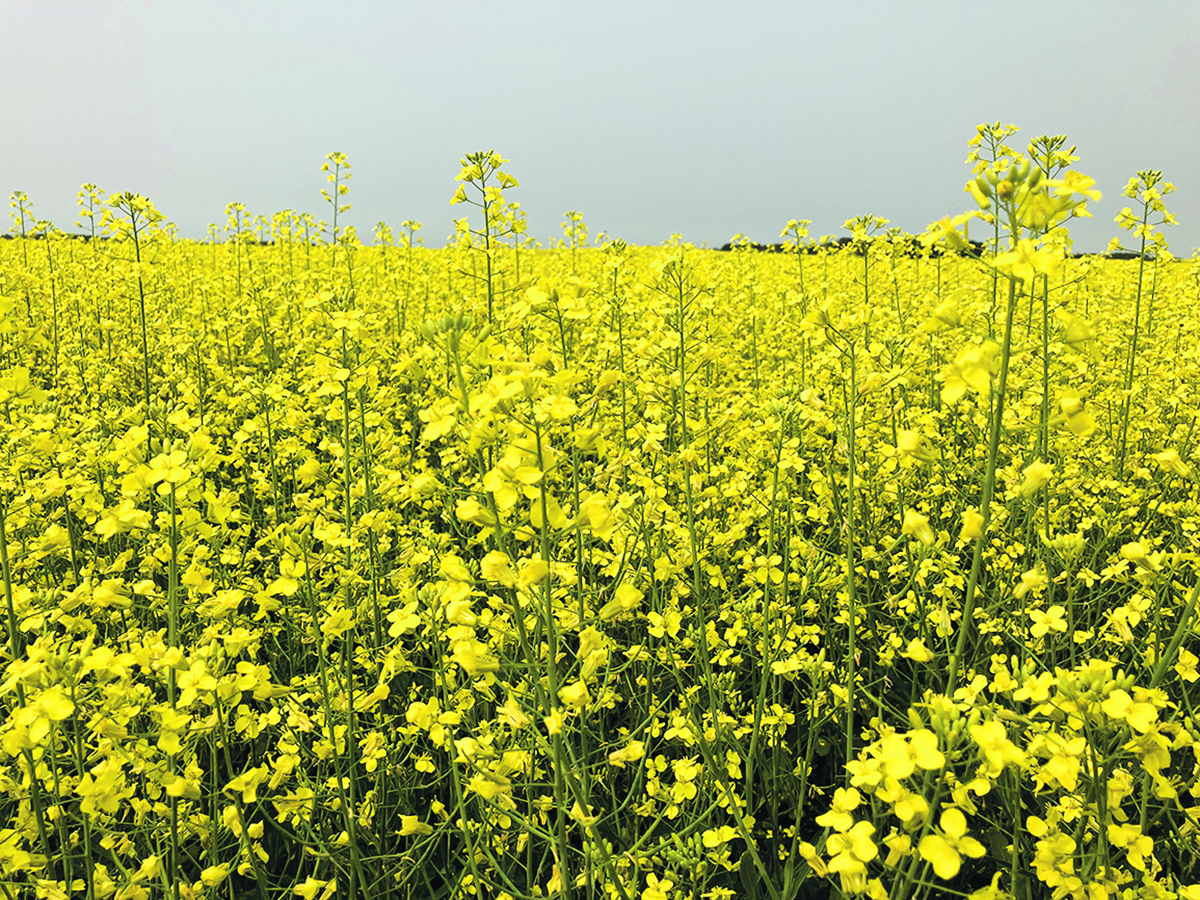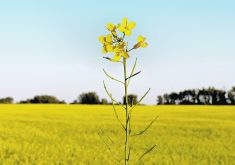Prairie winters are still an uphill battle for winter canola, but improved varieties are being bred in the United States
Glacier FarmMedia – Canola is no longer just a spring crop in parts of North America.
According to the U.S. Canola Association, winter canola has become the dominant option in the southern Great Plains.
That might not be so surprising to Canadian farmers. It’s a lot warmer in that region than the Canadian Prairies.
Read Also

Sugar beet harvest underway in southern Alberta
Alberta Sugar Beet Growers hosts field tour to educate the public on the intricacies of the crop, its harvest process, and contracts with Lantic Sugar
Winter varieties are also appearing closer to the U.S.-Canadian border. According to the same U.S. canola group, both winter and spring canola have a presence in places like Montana, including counties on the international border.
Compared to its spring variety cousins, however, plant breeding for winter canola still has some work to do.
For the regions that can grow it, winter canola has the benefit of blooming earlier, dodging concerns around heat blast, while the U.S. Canola Association suggests that yields can eclipse spring canola by 20 to 30 per cent.
Research suggesting that adding winter canola to the rotation increases wheat yields further boosts the crop’s popularity.
Growers, however, found themselves hungry for new varieties that were better tailored for their operation and their goals.
That variety development is making significant strides, according to Michael Stamm, an agronomist and canola breeder at Kansas State University.
Stamm was among the speakers at the Canola Week agronomy event in Saskatoon in late 2024.
“I would say our biggest challenge is really crop consistency,” he said.
“Farmers really want to grow canola for that yield boost in their other crops, but the consistency is what really frustrates them,” he said.
To address consistency issues, Stamm and his colleagues reviewed previous data on open pollinated and hybrid varieties. The data saw a 13 per cent yield difference between the two, with the hybrids being the higher yielding.
In 2019, for example, their test fields faced more than 1,270 millimetres of precipitation. Under those wet conditions, the hybrids had minimal lodging and yielded more than twice as much, while open pollinated varieties suffered 42 per cent lodging and an average yield of 23 bushels per acre.
They then progressed to seed production and cross tests for winter canola in 2020, turning to Ogura cytoplasmic male sterility to help push forward the development of hybrid lines.
By the time the researchers brought their selected lines back to the field, they had more weather to worry about.
Extreme weather has been a major agricultural headline in much of agricultural North America in recent years.
“We’ve had some distinctly different weather events that have caused challenges with getting the amount of data that we definitely need,” Stamm said.
“But the future, I think, looks pretty bright for hybrid parent line development. And, again, we’re primarily focused on the female side at this point in time.”
For a better idea of parent combination performance, more “normal testing conditions” are needed, he said, although researchers have identified potential to introduce TrueFlex traits into winter varieties.
With excitement abounding around canola’s potential as a biofuel feedstock, the team is also breeding with oil content in mind.
It doesn’t mean much yet for Canadian growers.
While the U.S. Canola Association notes some winter canola further north, the northern Great Plains is still dominated by spring canola. The target area for winter canola remains further south, in the wheat belt of southern Kansas and Oklahoma.
Stamm’s tests have included acres in Minnesota and North Dakota, but with varying results over the years due to weather variation.
Survival and durability were part of his trials. The team looked at more than 200 genotypes on 190 site-years, with winter survival rated as a percentage of the initial fall stand. They also compared historical temperature data, solar radiation, precipitation levels, and wind speeds going back to 1979 for the test sites.
They identified three main variables underpinning survival: days with temperatures between -15 and -10 C, the frequency that mean temperatures oscillated above and below freezing and and average windchill.
Many genotypes were classified as semi-tolerant or semi-susceptible to winterkill. Only seven were classified as tolerant, all of which came from Stamm’s program.
“We’re working and trying to identify new winter canola production climates, particularly in the colder north,” he said.
“Of course, we would like to move it north of the border. That’s still to be determined.”
He expects to see continued investment in canola variety development in his region of Kansas thanks, in no small part, to demand from renewable fuel markets.
“We do need to make this transition from an OP (open pollination) driven market to a hybrid market, so we can take advantage of all of these traits that are available in our hybrid backgrounds,” he said.
“Whether that’s hybrid vigor, winter hardiness, vigorous fall and spring growth, pod shatter tolerance, blackleg, lodging tolerance.”
















